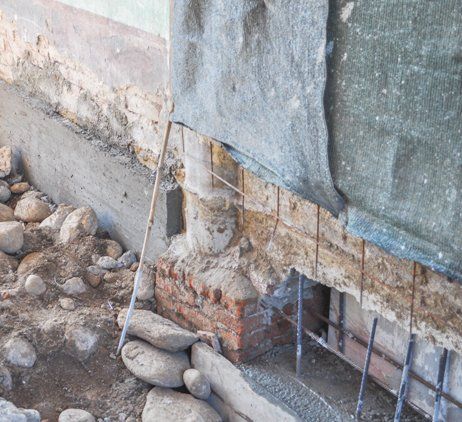There are many types and benefits to underpinning. To straighten a bowed basement, helical
tiebacks can be used. They are often made out of hot-dip galvanized, and experts use them for
support walls. They are extremely durable and can hold up to 200,000 pounds. However, helical
tiebacks are difficult to install and require extensive excavation.
Concrete pads are usually used to support concentrated loads. Concrete pads are usually made
from timber poles or steel that are driven into the ground. Underpinning Melbourne is also done with steel screw piles. These types can cause noise and disruption, but they cannot be used to remove
groundwater or fill. They are not recommended for buildings that have raft foundations.
Slab Injection
Slab injection, which involves injecting resin or grout in the ground, is the most recent method for
slab repair. These materials fill in any cracks beneath the slab and expand to compress it.
Unfortunately, this method can’t work in all situations and is not accurate in terms cost. It can
also cause a lot of damage, so it is not a permanent solution. You should seek professional
advice before choosing this method, as it can be expensive and disruptive.
When determining whether your home requires underpinning, the most important factor is the
soil type. Certain types of soil are prone to significant structural changes, making them a prime
candidate for underpinning. The type of soil you use will determine the extent of damage that
you can cause and which types will be most beneficial to your property. However, the decision to
underpin your house will depend on your budget and the extent of damage that you can tolerate.
Strengthened Foundation
Changing usage may also result in a need for underpinning. A building built on unstable soil can
become unstable as it is heavier. Additionally, if you are adding a second story, your foundation
will need to be strengthened again. Soil erosion can also lead foundation failure. Fortunately,
engineers are more aware of soil properties today than they were even a few centuries ago, and
engineering reports can help you avoid these issues.
Another common method of putting down a foundation is with piles. Piles are a great choice
when the soil is very hard or the foundation is too deep to be underpinned with other methods.
Piles are installed at predetermined positions on the structure, and reinforcing beams are
connected to them before concrete is poured. Usually, you will need to remove any internal
floors prior to installing a pile. Also useful for lightweight structures are helical and push piers.
These are galvanized steel piles that are drilled into existing substructures.
The Beam and Base Method is a refinement of the Mass Concrete Method. The main difference
in the two methods is the ability to build the beam above or below the footing while the mass
concrete bases are built above it. Both transfer the building’s weight onto the mass concrete
bases. There are many benefits to both methods of underpinning. However, whichever method
you choose, your home or office will have a solid foundation.


